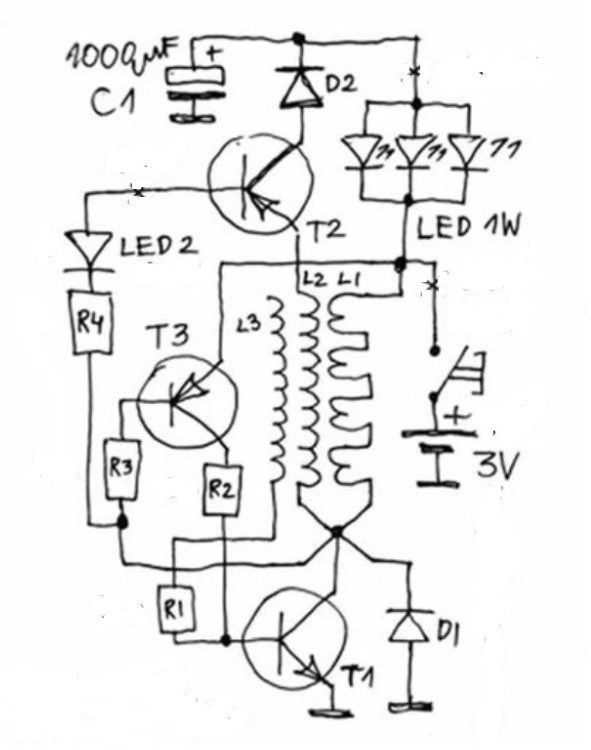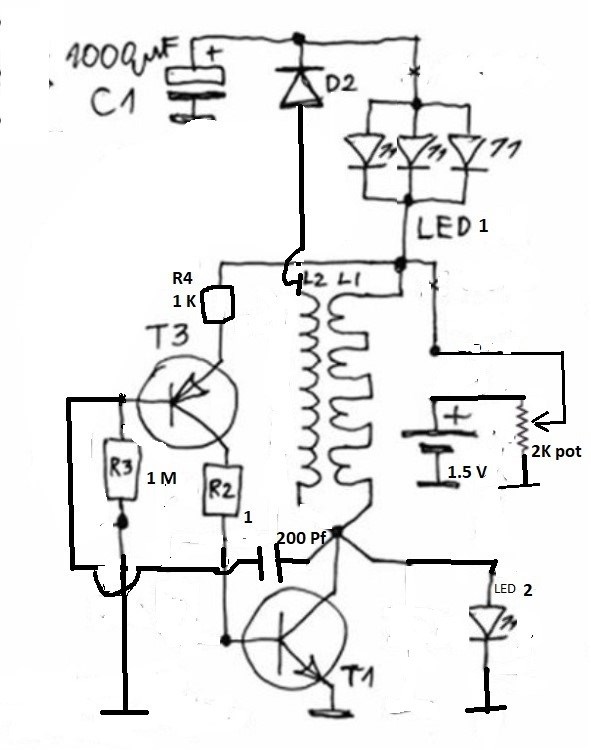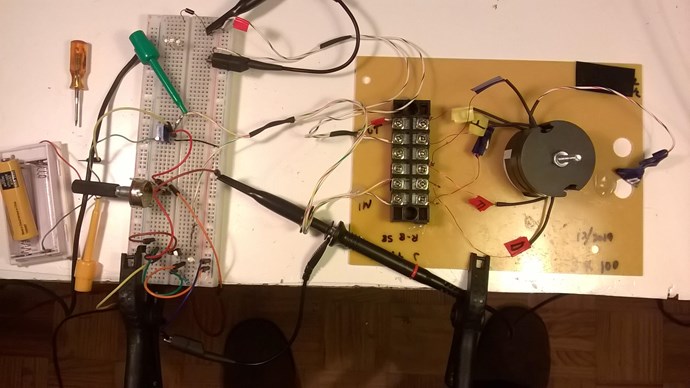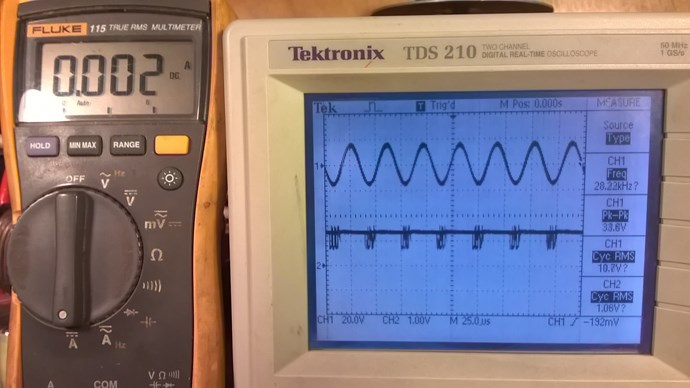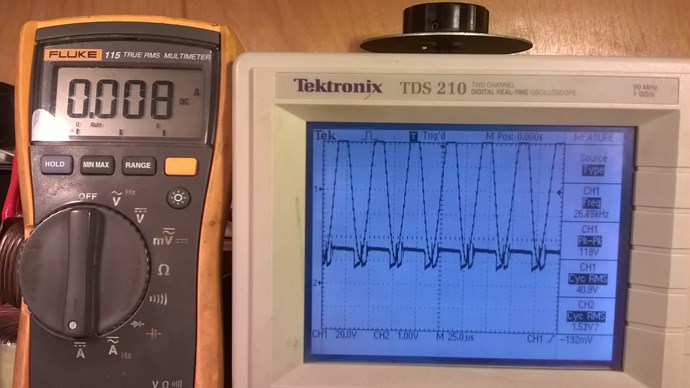I transferred my thread on Non Linear Resonance here to BeyondUnity.org
Non Linear Resonance
- 12K Views
- Last Post 14 January 2025
I transferred my thread on Non Linear Resonance here to BeyondUnity.org
Here is the original Akula's circuit on we gonna work:
I modified the basic circuit of Akula so that it works like a high gain oscillator. It consumes almost nothing, 2 ma,.
It has the effect of a hammer (the Circuit) on a bell (the Coils) by easily adjusting the natural resonance frequency of the coils which has already been vitrified in advance with a F.G. and a 28.2 Khz oscilloscope,
I used a 2 K multi-turn potentiometer for accuracy as a voltage divider and a small 1.55 volt battery as the main power supply for the circuit.
Here the modified circuit used i used in the test.
The test :
You will notice that at the natural (linear) resonance frequency of 28.22 Khz and an input voltage of 1.08 volts appearing on channel 2 and a current draw at the input of 2 ma, we still obtain a fairly good voltage approximately 33.6 volts peak to peak at the output.
When I exceed a certain voltage of 1.45 volts ( near the max of the battery) another effect occurs quite abruptly the frequency drops to 26.77 Khz and this is what I will call nonlinear resonance.
Quite surprising this effect is the voltage X8 and so is the current.
The reactive power developed by this circuit, is around 130 volts at the maximum of the battery, if we consider that the entire circuit is supplied with a single 1.5 Volt battery and there is no d external oscillator it seem good performance.
This small circuit has 2 BJT transistors 1 x NPN and 1 X PNP is the basic idea of the Akula circuit. Thereafter I will modify the same circuit in order to be able to charge C1 and thus have this famous flashlight without battery.
Akula's basic circuit cannot be copied as it is built, having followed hundreds of tests of its circuit, I have not yet seen anyone succeed, but their way of thinking is very good, it you have to rebuild it while keeping the basic idea.
I believe I am on the right track.
A more explicit video will follow soon, I have a little problem with my camera.
Jagau
I am currently working with a 1.2 volt rechargeable battery instead of the C1 and with recharging in non-linear mode it has been going on since yesterday with only one milliamp of total consumption and 6 LEDs on.
It’s good.
p.s. I mean linear in continuous mode so very low power and non-linear in charge mode.
Jagau
Question: Is your schematic correct in that your L2 only connected at one end?
Hi Zanzal
the modify schema was to demonstrate non-linear resonance only so L2 was not plugged into one side alone.
I am trying a second schematic and it is not yet ready and that is what it gave me that the tension does not drop until very soon after 2 days.
I'm going to put it online soon and you're going to be able to try it,
Just for curiosity did you manage to achieve the nonlinear resonance effect as explained?
Jagau
Thanks Jagau. Looking forward to seeing your next schematic.
No replications for me for a few months still (at least). All my stuff is in boxes, it is hard to get access to anything and I have no space away from my little one who would take an obsessive interest in anything sitting on my desk. I've only been able to do a few very simple experiments in the last few months.
I do want to attempt a replication of what you've posted though. I think your observations and intuition are very good here and I like the path you are pursuing and intend to follow a similar one.
@ Zanzal
Ok I understand your situation better now, maybe this little circuit will help you have a better time. You can also replace the 1 k resistor with a potentiometer and observe the interesting effects that will be produced.
@Atti
thank you Atti your circuit is interesting the POC produce very interesting effect, I will study your circuit,
thank you for sharing.
Jagau
I had to be away recently, keeping an eye on what was happening in the forum,
Finally back in my lab.
Jagau
I reread Edwin Gray's invention and it gave me a fantastic idea that I had been looking for for some time. It was a genius this guy,
SPLITTING THE POSITIVE
Besides, when we look at Akula's setup it works the same way.
Finally I found a set up which seems to work well.
I'll keep you posted.
The best way is still to experiment.
Jagau
Hey Jagau. Will love to see your experiment!
I rediscovered this very interesting concept, but as part of the Akula LEDS lamp.
There is no battery switch between the input and the output and the batteries must always remain fully charged, that is to say in the cricuit that I am currently experiencing.
For the moment I am experimenting this kind of circuit but with only 3 small rechargeable batteries at the input and none at the exit.
The system has been operating for more than 2 days with 6 LEDs plus the operating circuit and the batteries continue to charge. I add other LEDs to stabilize the system.
I rediscovered this concept by re-reading the invention of Edwin Gray and by re-reading the book by Peter Lindeman on how to divide the positive. Do not forget that sharing the positive also applies to capacitors as in the case of Gray
I'm going back to my laboratory.
The best way is to experiment.
No one online at the moment
-

-

-
-
-
-


